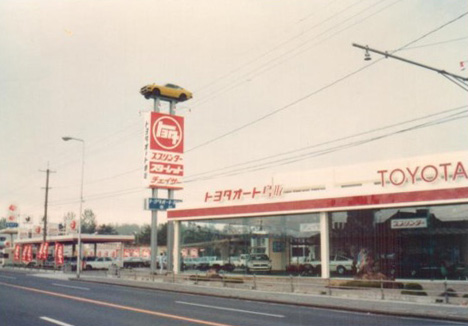
“Why does Toyota have so many dealership chains in Japan?” you may have asked yourself at some point, “And why do certain dealers sell only certain models?” It’s all very confusing. Well, as of last month, if you’re buying a Toyota in Japan, you will no longer have to go through its byzantine network of showrooms to figure out who sells what. Say goodbye to the various Netz, Toyopet, Corolla, and Toyota Store chains. At last, everything is being unified under the Toyota brand, as the last vestiges of Japan’s Bubble Era auto sales traditions dies for good.
During Japan’s post-war economic boom times, Japan’s carmakers went nuts with various sales channels as the selection of models increased. Each channel would have a different selection, sometimes grouped together under a common theme (sportiness!) or marketed towards a specific demographic (the youths!).
It was hard to keep track of which dealer you had to visit to buy the car you wanted, but it’s also the reason why we have different models with minor variations like the Sprinter Trueno and Corolla Levin, or entirely separate model names based on the same chassis like the Celica and Carina. Toyota probably did the most to differentiate their offerings, but even then there were models, like the Supra, which were available at all dealerships.
Starting in May 2020, however, all dealerships (except for Lexus) began revamping their systems to handle the sales of all Toyota models. In commemoration of the passing of this strange and perplexing system, here’s a brief history of Toyota sales channels.
In the beginning, there was only one. Toyota Stores were established in 1946 as the lone sales channel for everything Toyota Motor Corporation made, This was at a time (the early 1950s) when the lineup was limited to a handful of models and most Japanese people weren’t yet buying cars. In the 1960s, Japan’s rapid growth spurred private car ownership, and it became impossible for these small stores to handle the increased activity.
In 1956, the Toyopet Store was created to handle sales of the Toyopet SKB truck (later renamed Toyoace). The Toyota Store would focus on selling premium cars like the Crown, while Toyopet would handle some of the lower end cars and trucks.
The 1961 debut of the compact Toyota Publica not only added a model, but a new class of car to the Toyota lineup. Thus, the Publica Store was launched at the same time, marketing to people who had never owned a car. It even helped promote car ownership by advocating for getting your driver’s license and offering easy to manage loans.
However, the Publica didn’t turn out to be the hot seller Toyota was expecting. Toyota had outlined an initial monthly target of 3,000 units, growing to 10,000 eventually, but initial sales barely topped 2,000 before flattening out to around 1,600.
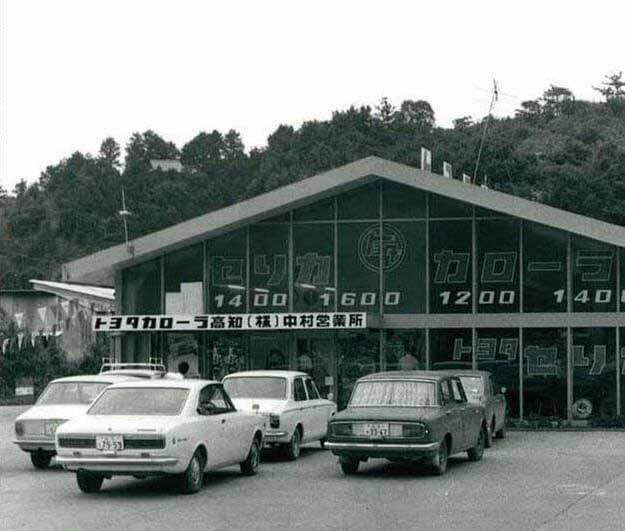
The 1966 launch of the Corolla saved the Publica dealers, as the car quickly skyrocketed to about 18,000 sales per month. It was said that 1.3 million people visited Publica Stores to inquire about the new 1100cc car, which had arrived just in time for Japan’s newly constructed expressways. According to Toyota, this was the moment that the company truly felt the “Era of the Car” had dawned in Japan.

In fact, demand was so great that Toyota launched a third sales channel, simply called the Toyota Auto Store, in 1967. This was due primarily to customer demand for a sports model, so when the Toyota Sprinter launched in April 1968, it became the flagship model of the Toyota Auto Stores. The fastback bodied car claimed a 5 kph faster top speed than the Corolla Sedan, giving the Toyota Auto Store a youthful, sporty image as it focused on younger customers.
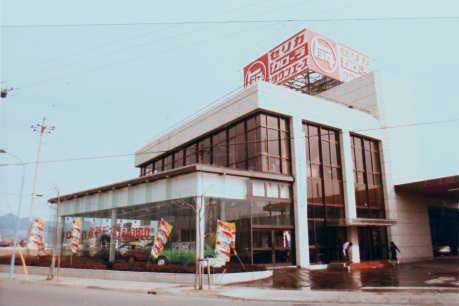
In 1969 the Publica Store was renamed the Corolla Store to reflect the newfound success of what would eventually be the best selling model name in the world. When the Sprinter became its own model in 1970, Toyota Auto Stores gained the exclusive rights to sell it, marking the first example of the “let’s swap some different lights on it and call it by another name” strategy that would define Toyotas for decades to come.


Are you following along? So far, we have four sales channels: Toyota, Toyota Auto, Toyopet, and Corolla stores. On April 1, 1980 ToMoCo launched yet another one, called Vista. Its exclusive models included the aptly named Toyota Vista, a light-swap version of the Camry, the MR2, and eventually Aristo.
The Vista stores offered services the others didn’t. Until then, in typical Japanese customer service fashion, dealers would bring cars to your house for a test drive, and deliver them to you at home once you pulled the trigger. Vista stores pioneered over-the-counter sales, now commonplace in Japan, and were even open on Sundays.



Cruising through the 1980s with the Bubble Economy in full expansion mode, Toyota was able to capture nearly 50 percent of Japan’s new car market. These segmented dealerships helped that dominance by focusing their marketing and offering unique services to different customer bases.
During this time, the branding was further distinguished, as the old katakana “トヨタ” logos gave way to more modern designs. Toyota Stores were red, but not in the typical Toyota red you’re thinking of. It was more of a wine red, and the “TOYOTA” font looked nothing like the Helvetica logo that ToMoCo used on its cars.
Meanwhile, Toyopet Stores adopted a green motif, Corolla Stores adopted orange, and Vista Stores and Toyota Auto stores both adopted red and blue (though in 2000 Vista stores would change their logo to orange and blue). There was very little consistency in Toyota branding at all, and that’s one of the factors that led to the development of the Toyota oval logo in 1989.
Despite decades of new vehicle launches and light-swapped models, you could trace the evolutionary roots of each dealership chain by looking at the oldest nameplates. Toyota Stores, for example, still maintained exclusivity on the Crown, Century, and Land Cruiser. Toyopet Stores were the only ones selling the Corona. Toyota Auto Stores cornered the market on the Sprinter. Corolla Stores and Vista Stores had a monopoly on the Corolla and Vista, obvs.
Nevertheless, as time went on the distinct characteristics of each sales channel got muddied. Toyota Auto, Vista, and Toyopet Stores all received the Chaser, Cresta, and Mark II, respectively, as three incredibly similar versions of the same sedan.
After the bubble of Japan’s economy burst at the beginning of the 1990s, car sales slowly began to fall. Perhaps sensing some redundancy, Toyota began yet another rebranding effort.
On August 23, 1998 Toyota Auto Stores were renamed Toyota Netz Stores. According to Toyota, the name stood for — and this is 100 percent true — “Network of Energetic Teams for Zenith.” They were probably also seeking a name that, like Gazoo, sounded hip at the dawn of the internet age, even if it sounds horribly outdated today.
The first model introduced under the Netz banner was the Altezza, launched in October 1998 and instantly giving the brand some performance cred. It was quickly followed in January 1999 by the first-gen Vitz, a car known for kicking off a compact car renaissance in Japan. As such, in 2000 Toyota launched the Netz Cup, a one-make racing series using Vitzes for beginners and Altezzas for advanced drivers.
Then, in May 2004, with the Lexus brand about to be launched in Japan, Toyota finally began to reduce its sales channels by merging Vista Stores into Toyota Netz Stores. The new chain was called simply Netz, dropping the “Toyota” from the name.
At this point, we were back down to four sales channels, ostensibly distinguished in the following manner. Toyota Stores sold premium and luxury cars, Toyopet Stores offered medium-priced cars, “Corolla” dealers provided mass-market models, and Netz Stores sold “unique” cars that appealed to younger drivers.
However during this time, in the roaring 2000s, Nissan, Honda, Mazda, and Mitsubishi all consolidated their various sales channels. Toyota was the last holdout. So why merge everything now? The short answer is, vehicle ownership is declining. Before the bubble burst, in 1990, Japan bought a record number of 7.78 million cars. Last year, it sold 5.23 million, a one-third reduction.
With fewer people buying cars, five sales channels is unsustainable. That’s why last month, Toyota began to unify all the networks except for Lexus under new branding. Not surprisingly, the proposed dealership design resembles how Toyota dealerships have looked like for decades in the rest of the world.
Toyota has about 5,000 dealers in Japan — compared to just 1,500 for the entire US — so it’s almost certain that some under-performing stores will close altogether. Each store will carry the entire lineup of about 60 models, but Toyota says it’s looking to reduce redundancy there as well.
A 60-year tradition is about to disappear, and the future will likely mean fewer light-swap or rebodied models. That’s a little sad, but Toyota’s decision makes sense. And, as outsiders looking in at a system that often left us scratching our heads, we say good riddance. Buying a Toyota in Japan will be much less confusing from now on.





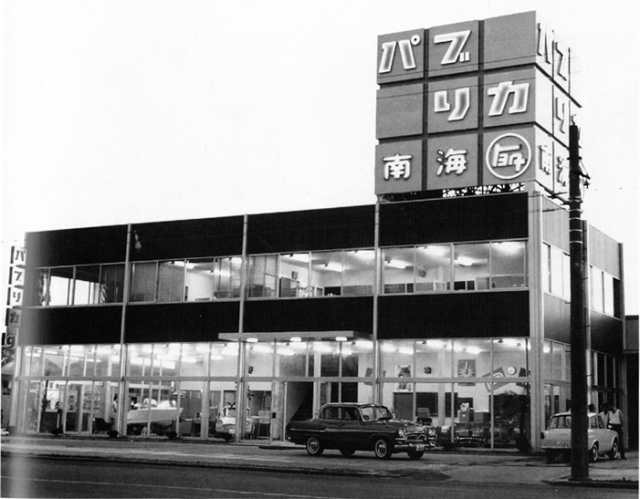
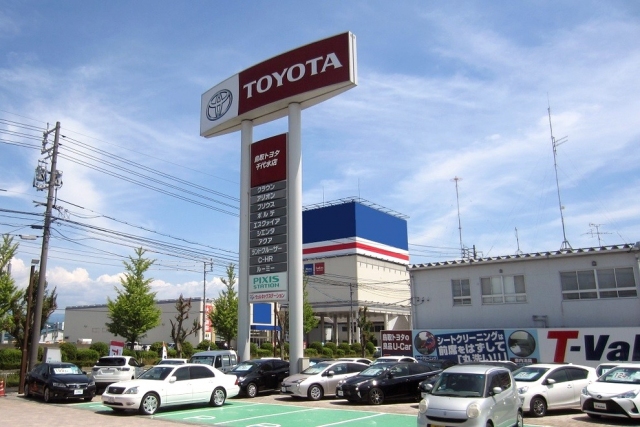
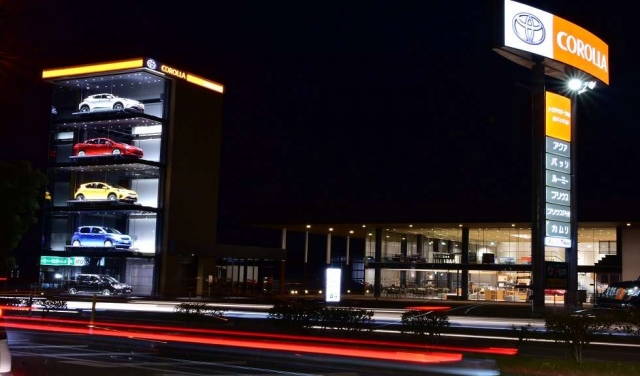

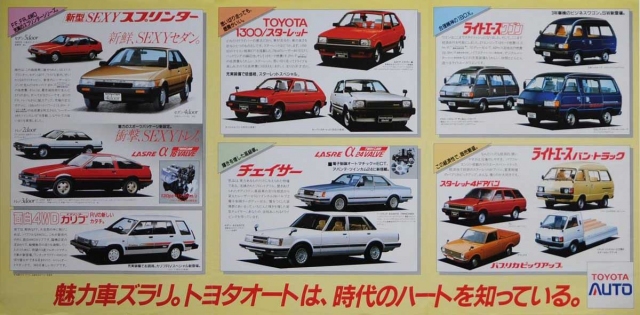
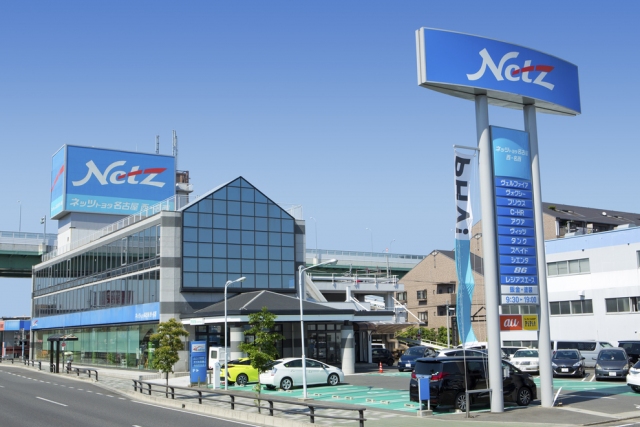
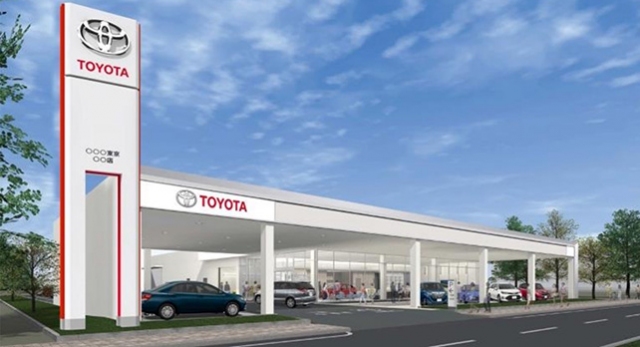
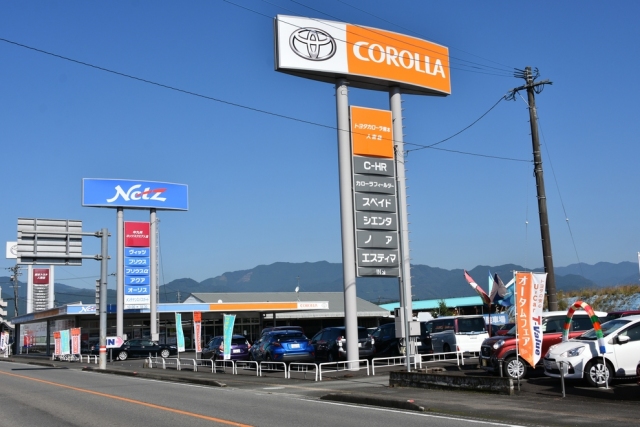
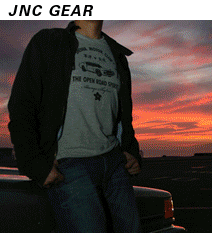
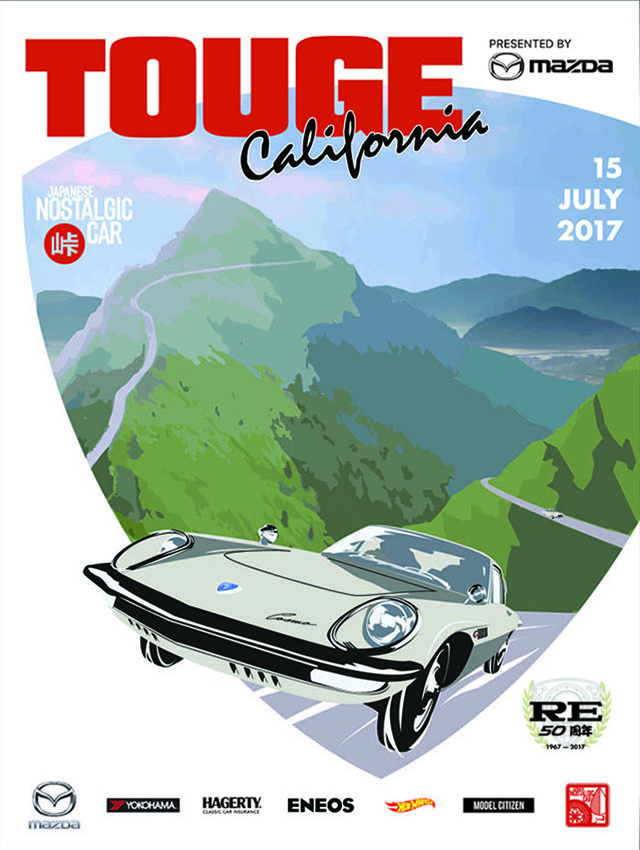
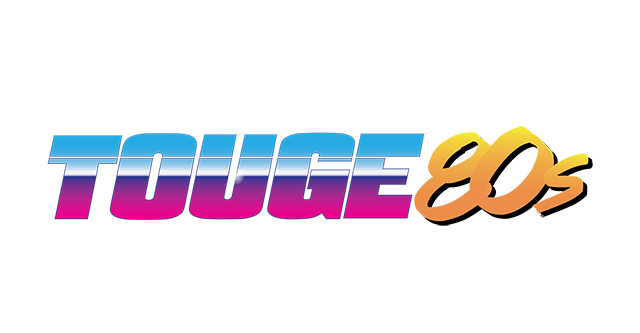

I always wondered about this. Thanks for the history lesson!
Toyota dealership network also influenced long time rival Nissan too. In the beginning there was Nissan Store, which became Bluebird Store, plus Nissan Satio Store, Nissan Cherry Store, Nissan Auto Store and when they took over Prince in 1966, Nissan Prince Store. When Carlos came on board, he consolidated all five networks into Nissan Blue Stage and Nissan Red stage until everything consolidated in 2003.
Honda also got into the game with the all-new Prelude which was exclusive to Honda Verno, then later when the Legend appeared there was Honda Clio and Honda Primo, which sold the Civic.
I’ve contributed heavily to the Wikipedia articles on these three networks, including the Toyota networks
I’ve read those articles! I’d love to see JNC do a feature on each of these dealer networks. I feel like I’m still discovering new models and variations every time I go to read up on the history of a particular model!
We’re planning stories on the other companies’ sales channels as well. Glad to see there’s other otakus about this!
Did you contribute to the Japanese or English version about the Toyota networks? In the English version it describes a rebrand of the Toyota Auto store to Vista store in the early 80s, while the Japanese version describes they existed alongside each other until the Netz-rebranding and merger six years later.
There are other sources confirming the English version, but I’m sure the Japanese version is accurate on this fact.
I came across the various networks when i would go over to Japanese Wikipedia, copy text into Google Translate, then interpret and rewrite it the best i could and write the English page. It’s also how i found out what “camry” means. Kanmuri = crown. So i had to trust the accuracy of the translation, and the source article, to get the facts as clear as i could.
I lived in Japan for two years in the late 1980’s, before the bubble burst.
I used to be able to find good info from your blog articles.
Wow, I didn’t know that! Thanks for that well-written piece.
This sounds much like how and why Ford and GM badge-engineered the same cars under multiple brands for decades. It’s interesting though, in that case it was looked down upon by the automotive community. This article seems to have a fondness for it. Unless I’m mistaken and it more a fondness of the Japanese Bubble era.
Not really fondness, just fascination. When I first went to Japan I couldn’t make sense of it all.I only knew Corolla as a model, and I was confused as to why, say, a Windom (Japanese market Lexus ES) was sold at a Corolla dealership. It took a long time for me to figure it all out, so I got slightly obsessed.
Exactly. I can remember when my hometown had a Chevrolet, a Pontiac, a Buick and a GMC dealer with Cadillac-Oldsmobile being the only store combining two GM brands. Now there’s a single GM dealership in what used to be the Chevy location. Mercury is gone and the Ford dealer sells Lincolns, the former Lincoln-Mercury dealership location is a Dollar Tree. There was a Dodge and a Chrysler-Plymouth dealer selling the same cars with different grilles and when Chrysler bought up American Motors all the AMC-Jeep-Renault dealers became Jeep-Eagle dealers.
Toyota dealership approach starting in the 80’s had a top level sedan at each dealership. Crown for Toyota Store, Corona Mark II at Toyopet, Cresta/Chaser at Auto Store and the rebranded Carina called Celica Camry at Corona Store, with the Corona/Carina further down the line ending with the Tercel/Corsa at the lower end with Daihatsu at the bottom of affordability. What made the choices so varied was each one had several trim packages available that seemed to change with the seasons, and engine displacement choices based on what the customer was willing to pay for yearly road tax (1.3, 1.5, 1.8, 2.0, 2.8, and so on). The bigger the engine, the better equipped your car came. This game would continue every 3 years because of JCI inspection renewal giving you 2 more years, then after 5 years an all new model appeared and you ditched your old one with 20-30k miles on it and your old car went to Australia.
Toyota’s hierarchy approach was essentially the same at all dealerships, with a large sedan as the flagship, then sedans that gradually reduced in size with the smallest Toyota Starlet at the bottom of the list. As their hierarchy approach changed due to market conditions, Toyota Store and Toyopet Store sold larger, more upscale products, while Corolla Store and Toyota Auto Store (Vista,Netz) sold smaller or sport oriented products while still offering a large sedan serving as flagship of the dealership network.
That started a lot earlier than the ’80s at GM. Between the 1960 end of the “any size you want as long as it’s XXL” era and the ’80s, the Sloan Ladder collapsed under the weight of each dealer channel wanting to be in every segment. In a way the dealer franchise holders got the worst of both worlds – a customer was asked to pay a bit more for a Buick Apollo than a Chevy Nova, but they didn’t get much to show for it. Certainly not comparing base models.
The theory at GM was that customers would start out with a Chevrolet and gradually climb their ladder of brands as they got older and wealthier until you got to Cadillac at retirement age. What they never accounted for was brand loyalty. So, when a customer landed on Buick and wanted to stay there, the Sloan model had to adapt, thus fragmenting GM’s house of brands.
They also didn’t account for the fact that the pricier brands also carried the potential stigma of appealing to older customers. If you wanted to appear youthful, you wouldn’t necessarily buy a Cadillac or Oldsmobile. Those perceptions lasted generations.
Just a small correction to the last sentence in a good article. Older Toyota (and other Japanese brands) models also went to other Pacific Rim countries such as New Zealand, where the import restrictions were not as tight as Australia’s were at that time.
For a “what if?” video I made two years ago about a fictional sixth store (Toyota Kaidou store) I investigated the history of the Toyota stores as well. I would say I drew roughly the same conclusions and explanations than you did. There were two differences though:
1. I didn’t know the Publica store was a disaster and was saved by the introduction of the Corolla and therefore renamed to Corolla shop. That’s a nice detail!
2. In my research I found several sources that named the Auto store to be renamed to Vista store in the early 80s, not as a new store next to the auto store. I know you shouldn’t trust Wikipedia, but it wasn’t the only source naming this. If I now read the (translated) Japanese version it does mention the Auto and Vista stores existed alongside each other. So I stand corrected there. Thanks! 🙂
For those interested, this is the video I made about the (fictional) sixth store:
It didn’t just make buying cars confusing, but buying parts as well.
Several years ago, I decided to pick up a set of door struts for our Sera while on vacation in Japan. My friends and I went to Toyota dealership closest to the house in Adachi. They didn’t have the parts, we’d have to go to another store. BUT, since we visited their store first, they would have to put in the request to the other store. Um, okaaayyy…
We hopped in my friends’ Renault Kangoo and headed for the other store. I think it was in Kawaguchi? Maybe further out? Anyway, we confirmed and placed the order. Then were told to return to the first store to take delivery of the parts and pay for them. Um, okaaayyy…
Maybe I should just stick with Yellow Hat. They’ve got the best commercials.
What a nightmare. At least we have Yellow Hat commercials to keep us entertained!
Dammit, do NOT call Toyota ToMoCo… ?
I may call my car 知子, but NEVER a ToMoCo Corolla.
?
In a way, it’s not that confusing, it seems that Toyota was employing an American framework like General Motor’s Chevrolet at the bottom, with Pontiac, Buick, Oldsmobile, and Cadillac at the top, Chrysler with Plymouth, Dodge, Chrysler, and Imperial, and FOMOCO ? with Ford, Mercury, and Lincoln.
For example,Sprinters were just restyled Corollas, like Firebirds were essentially restyled Camaros…
But in these leaner and more competitive times, nameplates and restyled models have been dropped.
Dealers are what sells the car, they know their areas well and can keep their running cost down compared to if Toyota runs all the dealers. So dealers are hands that feeds car makers. If all Toyota dealers are selling the same car at the same price, there won’t be any incentives to visit one or the other if they are in the same town, to keep things interesting they came up with store exclusive cars so it is fair for everyone as long as they keep up their good services.
It is also fun for buyers as they go in different stores to find out exclusive models since internet wasn’t that big.
But making exclusive models just for JDM seems not too cost efficient, if they sold their models worldwide would have been great but i guess the high end JDM cars aren’t making much profit and more of a giving back to society thing.
One of my all time favorites is the Will VS sold by the Vista network I guess. By todays standards, the styling is ho-hum but in it’s day (2001-2004), it was “Darth Vader”. I’ve seen some pretty tasty mods on them. Kanto Autoworks, which produced the model on a Corolla platform, made just 4000 of them but has a cult following. 1.8 liter with manual 6 speed please..
Another favorite was the Toyota COMS built by Toyota Auto Body; a single seat electric. 7-11’s in Japan used them for deliveries. I really like the styling & configuration options.
The Will Va os a fantastic car, even today its design with some changes could fit. Too bad that as you say is a little considered model.
The Will Va os a fantastic car, even today its design with some changes could fit. Too bad that as you say is a little considered model.
Toyota execs were old hands at this before the US Toyota brand gave birth to Lexus and Scion.
Great article. Glad to read this comprehensive history on a subject I didn’t know too much about.
In theory, this should mark the end of some bewildering JDM twins and triplets, such as Allion/Premio and Noah/Voxy/Esquire and consolidation to a single model (if not dropped altogether). But there’s a wild card in all this: China. While there should certainly be no more triplets, the fact that there are GAC and FAW Chinese Toyotas means that similar, badge-engineered (or light-swapped, as Ben Hsu puts it) twins will continue for quite a while. In China we already see Corolla/Levin, C-HR/Izoa, RAV4/Wildlander, Alphard/Vellfire and upcoming Harrier/Frontlander.
Thanks for this story. I have always wondered why there were so many different Toyota dealer networks in Japan. I wonder if you are going to do a story on the different logos Toyota has on its models in Japan.
Don’t forget the SIXTH Toyota store that sold Toyota’s Diesel-powered models. When I visited Japan in the 1980s, my guide was a bit of a car enthusiast and explained the surfeit of dealer networks. Apparently, “Toyopet” was created not just to highlight the new Corona model. The then-existing network of distributors was downright feudal and had an iron grip. The only way to get around them was to set up a separate dealer chain. “Vista” was aimed at the Japanese proto-yuppie.
After Nissan acquired the Cony company in the 1960s merger-mania, those dealers became Nissan “Cherry” dealers. Cherry dealers always offered a wide choice of small commercial vehicles to appeal to Cony’s old customer base. The cool and funky Leopard was split between two dealer chains – one sold the two-door, the other sold the four-door!
Hello. And Bye.
To be honest it was always stupid. Toyota makes Toyotas, who really cares where you buy it?
You really make it seem so easy with your presentation but I find this matter to be really something that I think I would
never understand. It seems too complicated and extremely broad for me.
I am looking forward for your next post, I’ll try to get
the hang of it!
I was extremely happy with the service at Newburgh Toyota. Nate Serrano did a superb job. Quick, courteous, with a smile. In and out in less than an hour. on 5/11/23. I will surely reccomend Newburgh Toyota to family and friends.
Thank you
Mendel Reichman Brooklyn NY
This really is a fascinating feature, are there any photos of Mazda,Mitsubishi and Nissan Showrooms in Japan from the 70s and 80s,I have a few Commercial Van and Light Truck Catalogues from Japan dating from the late 70s to early 80s like the Toyota Hi-Ace Mk 2, what I am looking for is online catalogues for Fire Engine-Police and Ambulance in use in Japan during the 1980s.
I visited Japan in 1985 and one of my most cherished souvenirs was a complete press kit offered to me by the manager of one of the Toyota dealers I visited. Unfortunately it was detroyed, along with my vast collection of automotive literature, in the flooding after Hurricane Katrina.
Part of the kit included a detailed guide that specified which sales outlet offered which models. If memory serves, there was a sixth set of dealers that sold only, and I’m assuming all of, Toyota’s Diesel-powered passenger cars. My Japanese was marginal at best and it’s possible I simply misunderstand the press kit. Did this sixth set of dealers exist?